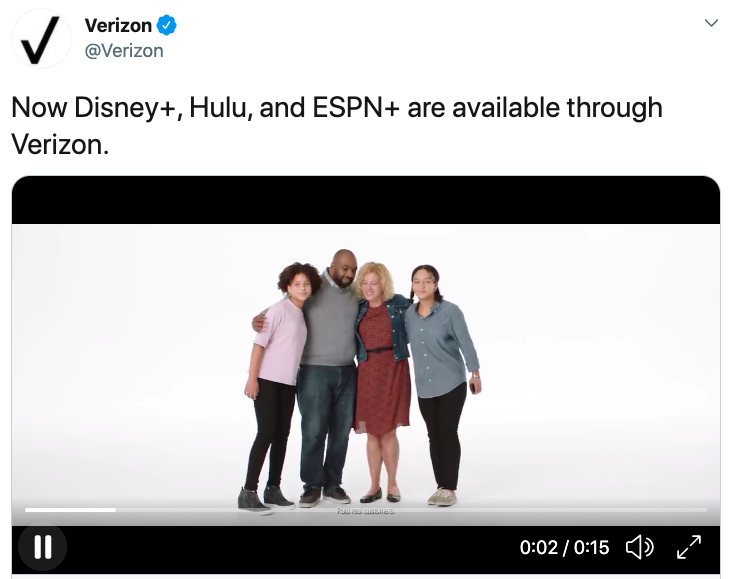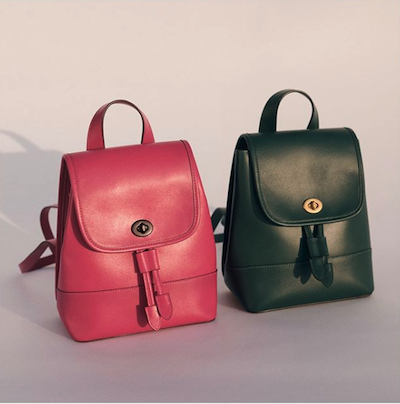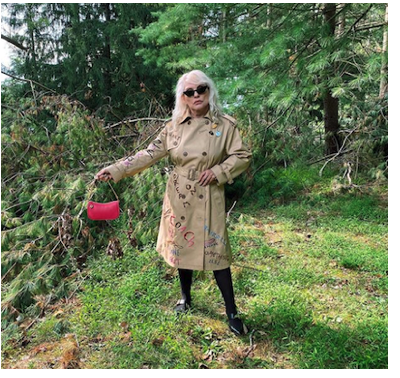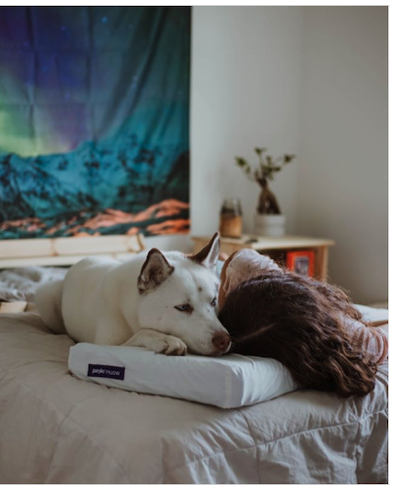Nate Nichols works in advertising, but that doesn’t mean he enjoys ads. He’s had Ad Block installed on his devices for years, he told Built In.
“I didn’t want to be bombarded with things,” he explained. “I wanted to have more agency and choice.”

Nichols (left), the founder and director of creative agency Palette Group, produces “purpose-driven” ad campaigns, branded videos and events with his partner, Steffi Behringer. (Exhibit A: Their recent Black History Month campaign for Foot Locker.)
Recently, he also co-founded Allyship & Action, an organization that combats systemic racism in advertising through virtual events, digital resources and certifications.
It’s hard to imagine a better advertising industry while constantly distracted by pop-up ads and auto-playing videos.
Nichols does draw inspiration from some past marketing campaigns, though. Early in his career, he worked on social media for the multi-million-dollar 2012 Hyundai Veloster launch — a “360 immersive experience” that blew him away.
The campaign fused pop culture and tech: A$AP Rocky made an appearance, and designer Jeff Staple — an early pioneer of sneakerhead culture — gave a talk in Chelsea Market as part of the launch. (Nichols live-tweeted for Hyundai.)
Meanwhile, a trio of display Velosters, “remixed” with high-tech extras like DJ equipment and gaming systems, popped up at festivals across the country, highlighting the coupe’s possibility.
Nichols recalls being wowed by the campaign, proof that “you can develop an entire universe for a single product” — one that people connect with emotionally, and wouldn’t want an ad blocker app to filter out.
That’s the kind of ambitious, multi-faceted advertising he enjoys creating, and consuming.
The ads that seep through his blocker app — most of them Twitter and Instagram ads — not so much.
We talked to Nichols about a handful of ads and branded images he’s seen recently, and the ads he wishes he saw.

He Sees Ads That Feel Synthetic
When this Verizon ad popped up in his Twitter feed, “it just didn’t feel real,” he said.
To him, it looked like strangers “in this big white void hugging.” During the coronavirus pandemic, hugging feels off — much the way KFC’s (suspended) “finger lickin’ good” slogan did. Why hugging?
“It’s almost like they want it to be a biracial family,” he said, “with a token black guy.”
It’s hard to tell, he said. The voiceless characters’ relationships are all implied in flashes, thanks to the quick cuts, and a voiceover “just talked about Verizon the whole ad, and pricing.”
It didn’t resonate with Nichols.
He Wants to Hear About Value More Than Pricing
It’s not that he doesn’t care about price. “I’m broke,” he said. “But I still have an ‘If it’s of value, you should invest in it’ mindset. I don’t have a scarcity mentality.”
So he’d rather see an ad articulating the value of something — even something cheap — than one emphasizing that plans start at $35 per line.
“I’m looking for experience,” Nichols said. “How is this going to genuinely make my life ... better?”
He Sees Ads That Try to Be Cute, but Feel Corny
“I thought it was trying to be cute and funny,” he said of this Old Spice ad starring Sofía Vergara and her husband, Joe Manganiello.
But when he saw it on Instagram, it struck him as corny and faintly sexist. It assumes that women care more about their skin and appearance than men — so much so that men can only have their own skincare products if they hoard them.
“It almost would have been better if he wasn’t there,” Nichols said, of Manganiello. “It could have been 10 times better if he showed up in the last five seconds and she was like, ‘Oh, is this yours?’”
She was the real star of the ad, to him.
He Wants to See Ads That Look Like His Real Life...
Vergara is also a star, period, from Modern Family and beyond. She has 20 million followers on Instagram.
“It’s obviously aspirational,” Nichols said, of the Old Spice ad. “You have a tall, handsome man — little bit of stubble — and Sofía Vergara.”
That’s not unusual, but ads with a more relatable, raw approach resonate more with him.
When targeting him, or someone like him, he wishes brands captured the nuances of day-to-day life more. He wishes ads showed him “that moment and experience that you rarely see, but you know people can relate to.”

Take Coach. The handbag company often showcases their bags in museum-like settings, especially in its print ads. The Instagram shot above, for instance, was clearly taken in a studio — just like the Verizon ad.
But when people buy Coach bags, they spend years taking them everywhere. Nichols wants to see that in an ad.
“What does [the bag] look like at work? When it’s in the gym? What does the life experience [of owning a Coach bag] look like?” That’s what Nichols wants to know.
“Let’s not showcase an experience that is true 10 percent of the time,” he said.
...Which Means Advertisers Need to Invest in Psychographic Data
To reflect his real life back to him, he knows that brands need data. He suggests they lean less heavily on demographic data, and more heavily on psychographic data, which captures people’s interests, values and emotions.
What does that look like? Interests people list on Facebook and Tinder fall under the umbrella of psychographic data; so does analyzing people’s Twitter likes, or the sentiment of their social media posts.
Psychographic data has gotten a bad rap as a weapon of psychological manipulation — it was what Cambridge Analytica improperly pulled from Facebook — but it’s ubiquitous.
“All of that is out there, right?” Nichols said. “You can see what people are tweeting about, who they’re talking to.”
Brands can take advantage of the newly digital public square in less controversial ways. Why not address each customer less like a stranger, showing some understanding of their community and culture?
To Nichols, that’s more compelling than messaging rooted in demographic data, like income and college education level.
“Scrap those insights, and really look at how I operate on a day-to-day basis,” he recommended.

He Wants to See Asymmetry and Texture
Nichols doesn’t own anything from Camper (yet), but he loves the shoe company’s Instagram.
“This is the shit,” he said.
He especially likes that they’ve embraced asymmetry. They often drop splashes of different colors on opposing shoes, and photograph their shoes with textured props in relatable, natural settings, like the messy bedroom above or a rocky beach.
“The world isn’t perfectly symmetrical,” Nichols said — and he appreciates when brands reflect and celebrate that in their advertising, “wabi-sabi style.”

He thinks Gen Z has done a lot to popularize this aesthetic across social platforms. “You look at a Millennial’s Instagram, and it’s like, brunch, symmetry, lines, bright colors,” he said. Gen Z has moved toward a more organic, unfiltered look — though obviously, there’s still artistry and curation involved in projecting that online.
Coach has actually been moving towards this organic, Gen Z aesthetic, too, in Instagram shots like this Instagram image (left) of Debbie Harry. She wears minimalist make-up and a coat with DIY-looking, Basquiat-inspired accents against a natural backdrop.
He Sees Timely Ads...

When this ad for Purple (left) popped up in his Instagram feed, it didn’t exactly reflect his experience back to him — it’s captioned “Would you let your fur baby sleep with you?” and he’s allergic to dogs — but it was well-timed. He likes Purple, and could use a pillow, but had frankly forgotten about the brand.
“Timing is important, especially in the current climate,” he said.
It was well-timed not just as a personal reminder, but as a reflection of pandemic realities. Investing in pillows and home furnishings feels more relevant, right now, than the Verizon ad’s mask-less, huggy concept.
...but They Could Be More Timely, and Tied to Current Events
At the same time, Nichols wishes that brands responded more directly to current events, and especially to cases of police brutality. Many brands spoke out in support of Black Lives Matter after George Floyd’s death in May, but haven’t necessarily kept pace with the movement.
Nichols spoke to us the day after the officers who fatally shot Breonna Taylor received their charges. One officer was charged for firing into her neighbor’s apartment; none were charged for fatally shooting 26-year-old Taylor in her bed while she slept.
Nationwide protests ensued. Less than 24 hours later, Nichols was screengrabbing the ads above. It felt off to him.
“Freeze your ad,” he said. “Say something. Do something.”
Starting out in social media marketing, he learned that major brands often have teams waiting to react to key moments in real time. The infrastructure is there. It’s just a question of using it.
“Why wouldn’t you stand in your values and your mission in a moment where people need you to?” he said. “I don’t care about Old Spice in these moments. ... I want to know that you care about my life, and my livelihood, not about my skin.”




